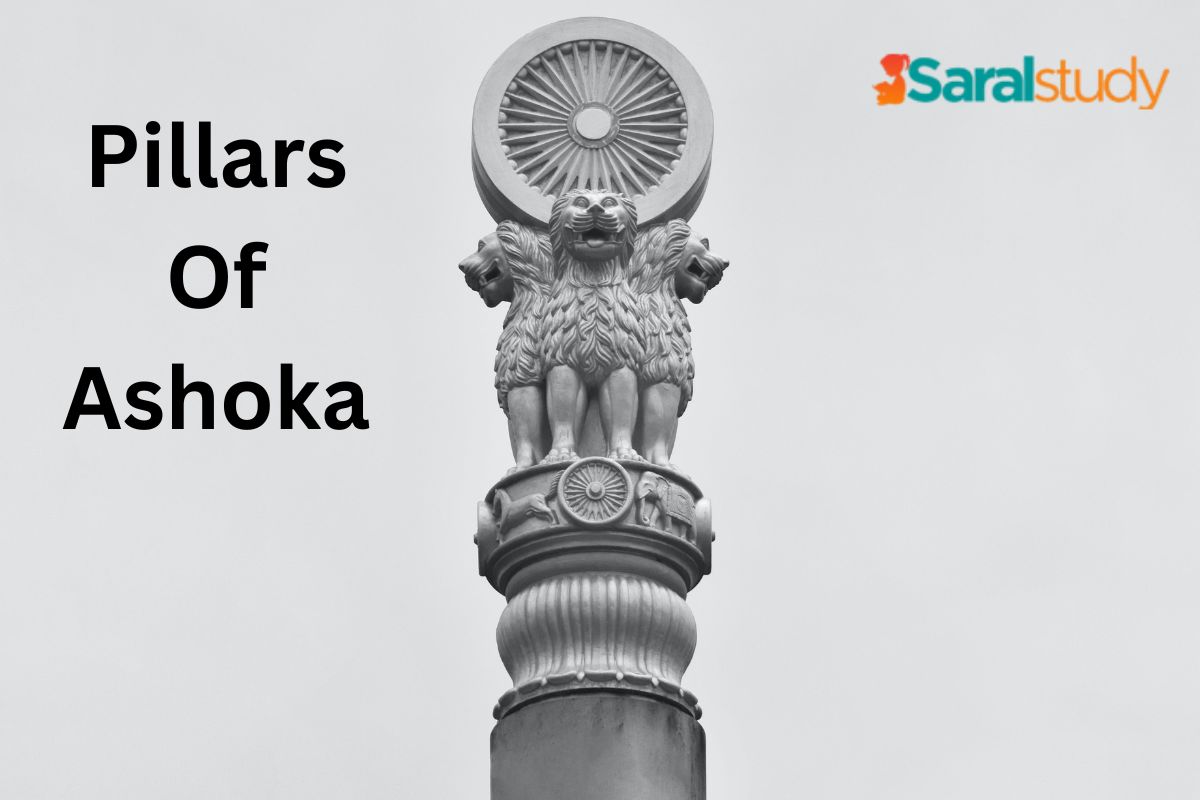The pillars of Ashoka were erected in the 3rd century BCE by Ashoka, the Great. Today, ten of the original pillars survive. It is possible that many more might have been erected but were lost over the ages. Each pillar measures in between forty and fifty feet and weighs up to fifty tons. These pillars were all quarried at Chunar to the south of Varanasi (present-day Benares) and dragged to their original locations.
Pillars Of Ashoka in Delhi
Ashoka’s pillars are located at Delhi (2 pillars. These were originally located at Meerut and Topra and moved to Delhi by Firuz Shah Tughluq in the 13th century)
Ashoka Pillar in Sarnath
The most famous of Ashoka’s pillars is the pillar at Sarnath. It has four lions that are seated back to back. The pillars at Rampurva bear the lion and the bull. Ashoka’s pillars were probably situated on a Royal highway that connected Patliputra to Nepal.
Ashoka Pillars Construction
The pillars were erected using the same techniques used to erect other obelisks around the world. The pillars were quarried from a mine south of Varanasi and all of the pillars were built by the same craftsmen. This can be established from the fact all the pillars bear the same signs of workmanship.
The pillars of Ashoka bear inscriptions in Brahmi script. Alexander Cunningham was the first to study the inscriptions on the pillars. He concluded that these inscriptions were written in Eastern, middle and Western prakrits.
Allahabad (The pillar was originally located at Kaushambi), Lauriya-Areraj, Lauriya-Nandangarh, Sankissa, Rampurva, Sanchi and Sarnath. The pillars at Lumbini and Nigalisagar bear dedicatory inscriptions while those at Vaishali and Rampurva do not bear any edicts.
Rediscovery Of Ashoka Pillars
Ashoka’s pillars were rediscovered in the 16th and later centuries. The first discovery was made by Thomas Coryat. Initially, Coryat assumed that the pillar was made of brass. However, it was observed to be made of highly polished sandstone. In the 1830s, the inscriptions on the pillars were deciphered by James Prinsep, Captain Edward Smith and George Turnour. Since then, Historians have discovered around 150 inscriptions of that period on pillars and other structures.
King Ashoka came to power in 269 BCE and was a tyrant in the initial years of his reign. However, he embraced Buddhism and non-violence after he campaigned against the Kingdom of Kalinga which saw a lot of bloodshed. The inscriptions on the pillars describe Buddhist morals. Legend says that Ashoka constructed 84,000 Buddhist stupas during his reign. Buddhism spread very rapidly during his reign.
Also Read: Hindi Diwas: Why Hindi Diwas is celebrated on 14th September, know history

